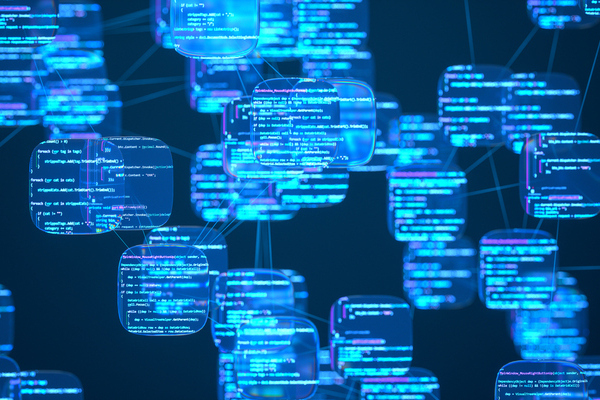SupplyChainTalk: Blockchain in supply chains – trends, progression and potential
On 11 June 2025, SupplyChainTalk host Alastair Charatan was joined by Muhammad Azmat, Deputy Programme Director, MSc Supply Chain Management & MSc Engineering, Aston University: Elisha Herrmann, Vice President, Board of Directors, Foreign Trade Zone 46/47; and Jason Cresswell, Value Chain Transformation Consultant.
Views on news
Food fraud siphons up to $50 billion from the global food industry every year and endangers public health. Blockchain technology can serve as an antidote to this growing crisis. Blockchain technology’s core principles can create a more transparent and trustworthy system.
Decentralization ensures that no single entity controls the data. TE-Food and Provenance offer blockchain-based traceability solutions that improve food safety and transparency. Although blockchain has huge potential, there are quite a few challenges to meet when it comes to creating a full ecosystem built around it. The Walmart projects, for example, started a decade ago but they proved to be pilots that never reached execution. For the past three years, there has been no mentioning of Walmart still using the blockchain.
Blockchain deployments
Blockchain, however, is used now more widely than 10 years ago. Blockchain is about decentralising what the ledger is holding. With 30% of letters of credit being fraudulent, blockchain is delivering the most value in the payment and fraud prevention sector, especially in the trade financing space. Blockchain is particularly successful in payment because it must be applied in a digital ecosystem there without the challenges of connecting it to physical objects. It has also borne fruit in very short supply chains such as diamond, where players know each other anyway.
There are single use cases that are at present the most suited to blockchain: tracking vehicles in transportation, writing purchasing orders, where it can also help enforce the terms and conditions of a contract. Blockchain is also used in monitoring and reporting carbon emissions in the supply chain, as well as for tracking conflict minerals and managing tariff payments where blockchain is instrumental to establishing the country of origin.
Another barrier to adoption is businesses’ unwillingness to share their data even if blockchain offers encryption. Therefore, it must be ensured that the benefit of a blockchain deployment exceeds the risks and cost of the technology. Implementation and integration costs of blockchain technology are high.
Although the prerequisite to any digital transformation project, data standardisation is also a costly effort. Fast moving industries are not a great fit for blockchain thanks to too much data that needs to be collected and continuous change. As blockchain is transparent by design, limiting access to company data can only be achieved by putting digital “sticking plasters” on information that the company is reluctant to share. Blockchain is a decentralised analogue network that already exists, therefore it can’t bring trust to the supply chain. In fact, it’s the other way round. For a company to be able to use blockchain, it already must have inherent trust and transparency.
Meanwhile, complex supply chains, by nature, are opaque. In the next five years, convergence between blockchain, AI and IoT is expected to help reduce costs and increase efficiency, while regulation on emission and other sustainability reporting may convince companies to make more blockchain deployments.
The panel’s advice
- The three pillars of blockchain are transparency, efficiency and trust.
- One of the reasons why blockchain isn’t catching on is that blockchain makes supply chains transparent and transparency can change power dynamics.
- Success factors for blockchain adoption include a clear value proposition, regulatory pressure, brand protection and a consortium approach.
- Blockchain works better with vertically integrated supply chains.
- If you consider deploying blockchain, think not just of your own RoI but everyone’s on that blockchain.

Business Reporter Team
Most Viewed
Winston House, 3rd Floor, Units 306-309, 2-4 Dollis Park, London, N3 1HF
23-29 Hendon Lane, London, N3 1RT
020 8349 4363
© 2025, Lyonsdown Limited. Business Reporter® is a registered trademark of Lyonsdown Ltd. VAT registration number: 830519543





